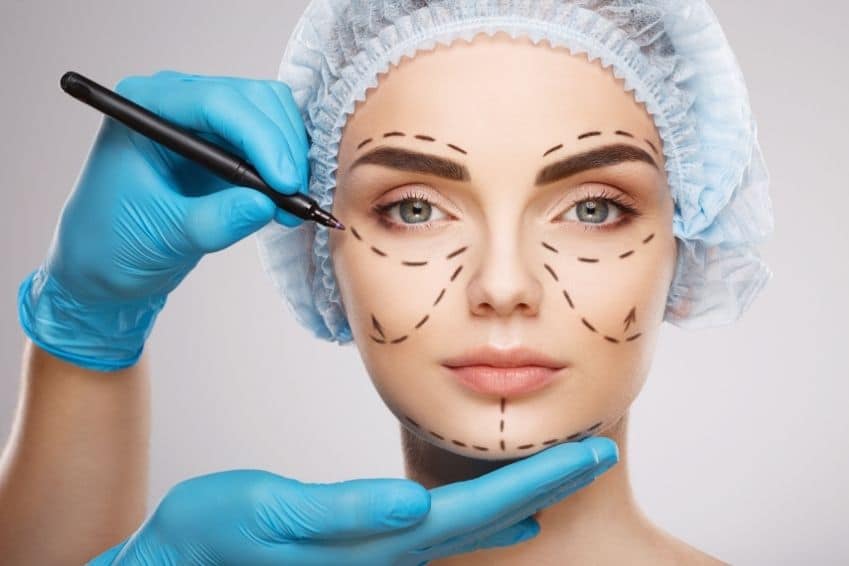Top 5 Plastic Surgery Myths

With 15.6 million cosmetic procedures, and 6.8 million reconstructive procedures completed in 2020 alone [1], there is no doubt that many people are seeking out information on plastic surgery treatments and following through with consultations and appointments. While this is great for those who want or need these types of treatments, those doing initial research are going to run into myths and oversimplifications surrounding plastic surgery information. So, before you make a decision, check out these top 5 plastic surgery myths.
1. PLASTIC SURGERY IS ALL ABOUT BEAUTY AND VANITY
This is a misconception that is perpetrated by the amount of Botox, facelifts, and breast augmentations we hear about in the media. The cosmetic surgery category is only 1 out of 6 possible training categories available by the American Board of Plastic Surgery.
The other 5 include hand surgery, disorders, reconstructive surgery, trauma surgery, and congenital defect repairs [1].
“While many people do undergo plastic surgery for cosmetic enhancements, there are many who require plastic surgery for medical reasons due to disease, disorders, or trauma.”
2. PLASTIC SURGERY PATIENTS ARE RICH AND FAMOUS
There is a common stereotype that many of us conjure up in our minds when we think about the typical plastic surgery patient; rich, famous, or both. This is simply not true, as the vast majority of patients who undergo plastic surgery are “middle-class” citizens who either save up their disposable income to pay for the treatment or use flexible financing. These types of patients don’t necessarily wear designer labels or flash around a lot of money, but instead are just average people looking to find increased confidence.
3. ONLY WOMEN GET PLASTIC SURGERY
While 92% of all cosmetic procedures in 2020 were for women [Plastic Surgery Statistics Report], this does not mean that they are the only gender that receives plastic surgery. In 2020, 8% of all cosmetic procedures, or 1.1 million treatments, were done on men [2]. Of these 1.1 million procedures, 289,000 were surgical in nature, and 820,000 were minimally-invasive.
The top five male cosmetic surgical procedures were nose reshaping, eyelid surgery, cheek implants, liposuction, and ear surgery, while the minimally-invasive procedures included Botox, laser skin resurfacing, laser hair removal, soft tissue fillers, and microdermabrasion. Other common treatments in men are gynecomastia surgery (male breast reduction), facelifts, and rhinoplasty.
4. PLASTIC SURGERY LEAVES NO SCARS AND LASTS FOREVER
Plastic surgeons can hide scars, and refine them to make them smaller during the procedure. For breast augmentation, scars are hidden in the armpit or below the breast, while facelift scars are hidden in the hairline or within the contours of the ears. A common place to hide scars for tummy tucks, is beneath the underwear line.
Plastic surgery procedures are definitely long-lasting, but they will not last forever. The amount of personal satisfaction you get out of the treatment will be dependent on how well you maintain your post-surgery appearance. Making sure to take care of your skin, opting in for non-invasive procedures, or keeping overall good health are preventative ways to look your best for as long as possible.
5. PLASTIC SURGERY IS THE SAME AS COSMETIC SURGERY
While cosmetic surgery and plastic surgery are closely related specialties, they are not one and the same. The techniques, principles, and procedures used in cosmetic surgery are focused entirely on enhancing a patient’s appearance, improving aesthetic appeal, symmetry, and proportion. Cosmetic surgery is all about making you look better. Examples of cosmetic surgery include breast augmentation, facelifts, rhinoplasty, tummy tucks, liposuction, and Botox, among others.
On the other hand, plastic surgery is a surgical specialty that is dedicated to repairing bodily defects to reconstruct normal function and appearance. Plastic surgery looks to correct dysfunctional areas of the body that are due to things like birth defects, disease, burns, or trauma. An example of this would be hand surgery to remove a tumor, or a congenital defect repair on a cleft palate.




